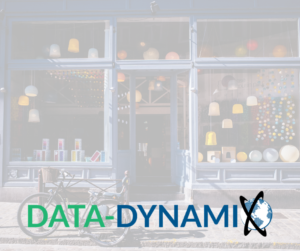 opens IMAGE file We live in a mobile-world and it’s never been easier to buy what you want from the palm of your own hand. We see this daily in social media as well, as platforms like Instagram making more and more moves for “m-commerce” where users can discover new products on social media platforms can drive sales and even help drive in-store, physical visits. The mobile experience is taking users from interest to conversion instantly and it’s changing the game for digital advertisers.
opens IMAGE file We live in a mobile-world and it’s never been easier to buy what you want from the palm of your own hand. We see this daily in social media as well, as platforms like Instagram making more and more moves for “m-commerce” where users can discover new products on social media platforms can drive sales and even help drive in-store, physical visits. The mobile experience is taking users from interest to conversion instantly and it’s changing the game for digital advertisers.
Location Listening is a tool for advertisers to harness this opportunity in a mobile society. It supports targeted and timely marketing by using Mobile Ad ID’s from people who were in specific types of areas. One example is targeting people who were near a competitor’s location to entice them with a better offer. Another is simply focusing on promoting physical locations when users are near there.
How does Location Listening Work?
Mobile Ad ID’s (MAIDs) are captured through permission-based apps with GPS-enabled devices. The MAIDs can be delivered to advertisers 24 hours later, and businesses can use this data to deliver relevant content to prospective customers based on recent geographic behavior. The implications of this data are extensive, but they have huge ramifications for live events, local business, and even large-ticket purchases.
What is so great about Location Listening?
The wonderful thing about Location Listening advertising is all based around permission-based data. Users have agreed to share their geographic location already, which opens up the door for marketers to have solid data. It also means that users get useful advertisements sent to them that actually help their buying process rather than annoy them. The ads can become more relevant simply because the data reflects recent movement.
Multi-Channel Approach
While our world is becoming more mobile, MAID’s provide great opportunities to be part of the sales process. They can be used on multiple platforms like Instagram, Facebook, Spotify, and other social platforms to reach customers in various native settings. MAID’s are also great to incorporate with a multi-ad approach where you are targeting similar audiences with email, display, and other social media ads. Remember that any time we can advertise to customers via different mediums and at different times, we move them closer and closer to a close of a sale.
Building Brand Loyalty
MediaPost cited in a January 2020 article, consumers between the ages of 19-39 are more likely to sharpen their engagement with a brand via in-store returns and shopping once there. Apply this concept to Location Listening, and you have a way to get customers back to your store, whether physically or online. Once someone shows up at your store, you have the opportunity to send other offers to up-sell them sooner after, or offer them other loyalty-based offers. The work you did to get them into your store initially can be rewarded greatly if you use Location Listening ads to keep the conversation going.
More and more mobile
In a world where we can hail a taxi, buy our groceries, split a meal with a group of friends, and so much more – all from a mobile phone, it makes sense that we would turn to mobile for our advertising strategies. Using this powerful data about location of mobile devices (and obviously the device’s owner), can make use smarter advertisers. And, it’s only going to get more relevant. As Generation Z is starting to come out into the workforce, the trends of Millennials and the next generations only going to move more and more mobile. Our consumers live life on the go, and therefore our advertising needs to work with this habit of behavior as well!
Visit Data-Dynamix to learn more about Location Listening, Mobile-centric and other digital advertising solutions.
